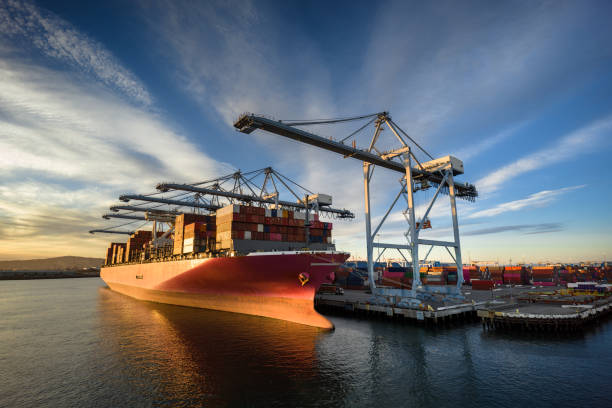US Customs Clearance for Amazon FBA: Tips to Get Your Inventory Approved Quickly
Shipping to Amazon FBA requires navigating both U.S. customs and Amazon’s strict inbound rules. Mismatches in paperwork, labeling, or compliance can cause costly delays, demurrage fees, and missed shipment appointments. This guide outlines the most common causes of slowdowns and provides actionable steps to ensure your goods clear customs quickly and are accepted by Amazon without issue.
1. Incomplete or Incorrect Commercial Documents
The Problem:
Customs authorities will hold shipments with vague product descriptions, missing HS codes, absent importer tax IDs (EIN), or discrepancies between the invoice and the carrier’s manifest. This triggers manual reviews that can add days to your clearance time.
The Solution:
Mandate a Standard Invoice Template: Require all suppliers to use an invoice that includes: detailed SKU-level descriptions, correct HS codes, unit value, quantity, net/gross weights, country of origin, Incoterm, and your Importer of Record EIN.
Pre-File with Your Broker: Send the commercial invoice, packing list, and Bill of Lading/Air Waybill to your customs broker 48-72 hours before arrival for pre-screening and electronic filing.
Reconcile Before Shipping: Double-check that all line items on your invoice match your Amazon shipment plan and the carrier’s manifest before the cargo leaves the origin port.
Client Case:
A UK seller avoided a 4-day customs hold by implementing a standardized invoice template and a 72-hour pre-check process with their broker. Their shipments now clear on the same day they arrive.
2. ISF (Importer Security Filing) Failures for Ocean Shipments
The Problem:
For ocean imports, the ISF (“10+2”) must be filed accurately and at least 24 hours before loading. Late or incorrect filings result in fines from CBP and can prevent your container from being unloaded at the port, causing significant delays.
The Solution:
File Early and Accurately: Ensure your broker files the ISF well within the required window with correct seller, buyer, consignee, and HTS code data.
Map to the Amazon FC: When the consignee is an Amazon fulfillment center, ensure the ISF and Bill of Lading correctly reflect this.
Use a Proactive Broker: Partner with a broker who monitors ISF acceptance status and can correct any rejections immediately.
Client Case:
A U.S. importer avoided vessel unloading delays by switching to a broker that guaranteed ISF filing within the required window and provided real-time status updates.
3. Amazon Inbound & Labeling Mismatches
The Problem:
Even after customs release, Amazon can refuse your shipment at the fulfillment center for non-compliant pallets or boxes. This leads to rescheduling headaches, storage fees, and chargebacks.

The Solution:
Follow Amazon’s Rules Exactly: Adhere strictly to Amazon’s requirements for pallet build, weight limits, and label placement. This includes FBA Box IDs on every carton and four pallet labels per pallet.
Coordinate Appointments: Ensure your carrier has a confirmed delivery appointment and understands Amazon’s gate procedures.
Verify Shipment IDs: Triple-check that the Amazon Shipment ID and fulfillment center address on your paperwork match Seller Central exactly.
Client Case:
A seller whose pallets were consistently rejected for label placement began having them built and labeled correctly at the origin warehouse. Their next container was accepted by Amazon immediately upon delivery.
4. Restricted or Regulated Products
The Problem:
Products like batteries, cosmetics, supplements, or electronics require additional approvals from agencies like the FDA or CPSC. Missing safety data sheets (MSDS), UN numbers, or other certifications triggers physical inspections that add days or weeks.
The Solution:
Pre-Notify and Provide Docs: Treat regulated products separately. Attach all compliance documents (test reports, MSDS, UN numbers) to your customs submission and inform your broker and carrier at the time of booking.
Avoid Mixing Cargo: When possible, do not ship regulated items with standard goods to prevent your entire shipment from being held.
Understand DG Rules: For batteries, follow all dangerous goods declaration and packaging requirements precisely.
Client Case:
A gadget seller started pre-attaching MSDS sheets for all power bank shipments. Customs shifted from physical inspections to rapid document reviews, cutting clearance time by several days.
5. Lack of a Rapid Escalation Plan
The Problem:
When a hold occurs, indecision and email chains waste precious time. Without a clear plan, demurrage fees accrue, and you risk missing Amazon’s strict delivery windows.
The Solution:
Create a 4-Step Emergency SOP:
1-Hour Audit: Immediately review all documents (invoice, HS code, B/L, labels) for errors.
Escalate to Broker: Call your broker directly with all digital files ready to send.
Authorize Action: Decide to correct and resubmit entry, schedule an inspection, or for critical stock, authorize a partial air shipment.
Update Amazon: Notify Amazon of the delay and reschedule your delivery appointment if needed.
Client Case:
A seller used this playbook to get a same-day inspection and air-lifted their top-selling SKUs, meeting a Prime Day promotion deadline and avoiding thousands in lost sales.
We Specialize in FBA Inbound Logistics
We understand the dual challenge of U.S. customs and Amazon FBA compliance. Our expertise ensures your shipments are documented correctly, filed on time, and accepted upon delivery, turning a complex process into a reliable advantage.
Get Your Free FBA Customs Checklist
Stop worrying about delays and chargebacks.
Click here to schedule a free consultation.
Email your shipment details (origin, destination, Amazon shipment ID, and product SKUs) to Hxin80377@gmail.com. We’ll send you a customized clearance checklist and a actionable plan to get your inventory to the fulfillment center fast.
Related Posts
Stop Customs Delays at Ports: The Ultimate Country-by-Country Import Document Guide (Save Time & Avoid Fines)
Stop Customs Delays at Ports: The Ultimate Country-by-Country Import Document…
How to Fix Common Customs Clearance Delays: A Step-by-Step Guide for E-Commerce Sellers
How to Fix Common Customs Clearance Delays: A Step-by-Step Guide…
How to Handle Customs Clearance for Dangerous Goods: Compliance Rules to Avoid Seizures
How to Handle Customs Clearance for Dangerous Goods: Compliance Rules…
